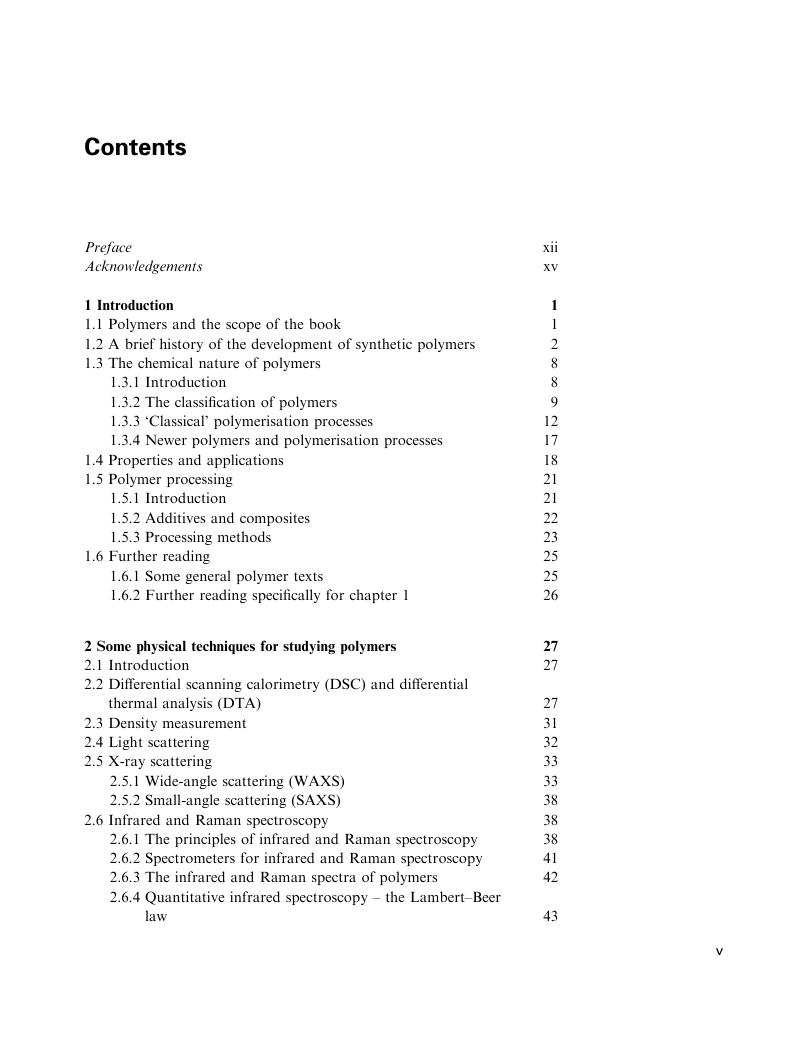Book contents
- Frontmatter
- Contents
- Preface
- Acknowledgements
- 1 Introduction
- 2 Some physical techniques for studying polymers
- 3 Molecular sizes and shapes and ordered structures
- 4 Regular chains and crystallinity
- 5 Morphology and motion
- 6 Mechanical properties I – time-independent elasticity
- 7 Mechanical properties II – linear viscoelasticity
- 8 Yield and fracture of polymers
- 9 Electrical and optical properties
- 10 Oriented polymers I – production and characterisation
- 11 Oriented polymers II – models and properties
- 12 Polymer blends, copolymers and liquid-crystal polymers
- Appendix: Cartesian tensors
- Solutions to problems
- Index
- Frontmatter
- Contents
- Preface
- Acknowledgements
- 1 Introduction
- 2 Some physical techniques for studying polymers
- 3 Molecular sizes and shapes and ordered structures
- 4 Regular chains and crystallinity
- 5 Morphology and motion
- 6 Mechanical properties I – time-independent elasticity
- 7 Mechanical properties II – linear viscoelasticity
- 8 Yield and fracture of polymers
- 9 Electrical and optical properties
- 10 Oriented polymers I – production and characterisation
- 11 Oriented polymers II – models and properties
- 12 Polymer blends, copolymers and liquid-crystal polymers
- Appendix: Cartesian tensors
- Solutions to problems
- Index
Summary

- Type
- Chapter
- Information
- An Introduction to Polymer Physics , pp. v - xiPublisher: Cambridge University PressPrint publication year: 2002

